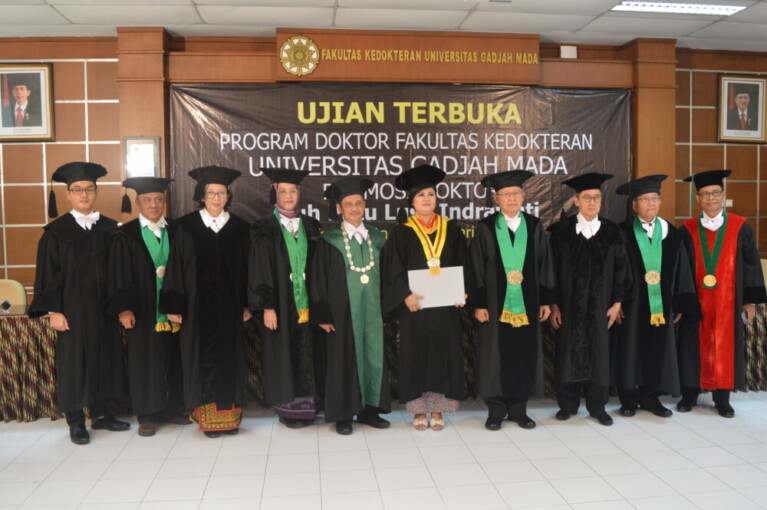
Chronic rhinosinusitis and nasal polyp are one problem in Ear, Nose and Throat health with increasing prevalence. Between years 2004-2007 there were 4.2-5.6% of patients at the Ear, Nose and Throat clinic of Dr. Sardjito General Hospital being diagnosed with chronic rhinosinusitis. Despite the high prevalence and morbidity of chronic rhinosinusitis accompanied by polyp, little is known on the mechanism that underlies the pathogenesis.
“One of the microorganism types that often infects nasal mucous and paranasal sinus that is latent is Epstein-Barr virus. Hence, it’s highly possible that this virus is one of the causes for recurring nasal polyp in patients with chronic rhinosinusitis,” dr. Luh Putu Lusy Indrawati M.Kes,Sp. THT-KL (K) said when sitting for her open doctoral examination at Faculty of Medicine of Universitas Gadjah Mada on Tuesday (23/2).
In her dissertation Luh analyses the role of Epstein-Barr virus on the emergence of nasal polyp in patients with chronic rhinosinusitis, including analysing expressions of various proteins in nasal polyp. The research involved 50 patients: 25 patients of chronic rhinosinusitis with nasal polyp as case group and 25 patients of chronic rhinosinusitis without nasal polyp as control group.
Generally, there are three important factors to cause polyp, which is chronic repeating inflammation in nasal mucous and sinus, disruption in vasomotor balance, and increase in interstitial liquid pressure and nasal mucous edema.
The Epstein-Barr virus is one of herpes viruses that are found everywhere, spreading between humans through saliva. It is estimated that 90% of human population are infected by the virus, starting from the oropharynx that spreads to the whole body parts. One of the Epstein-Barr virus products is Epstein-Barr Nuclear Antigen-1 (EBNA-1) that is always expressed in each type of its latent infection.
“In this research the EBNA-1 expression can be said as the indicator of the latent infection of Epstein-Barr virus in nasal mucous, particularly in patients of chronic rhinosinusitis and can be said as risk factor for the nasal polyp,” she said.
Research found out the difference between EBNA-1 protein expression in patients of chronic rhinosinusitis with polyp and non-polyp with value p = 0,004, OR = 6.00 (1.7-21.3). Thus, it can be concluded that the history of Epstein-Barr virus infection can increase the risk for nasal polyp in patients of chronic rhinosinusitis by 6 times stronger than those not infected.
“Early detection of Epstein-Barr virus in chronic rhinosinusitis is expected to serve as process of routine screening for all patients of chronic rhinosinusitis; also, to predict the emergence of nasal polyp as one of progresses made in the therapy, hence determining the prognosis for patient’s recovery,” she added.


